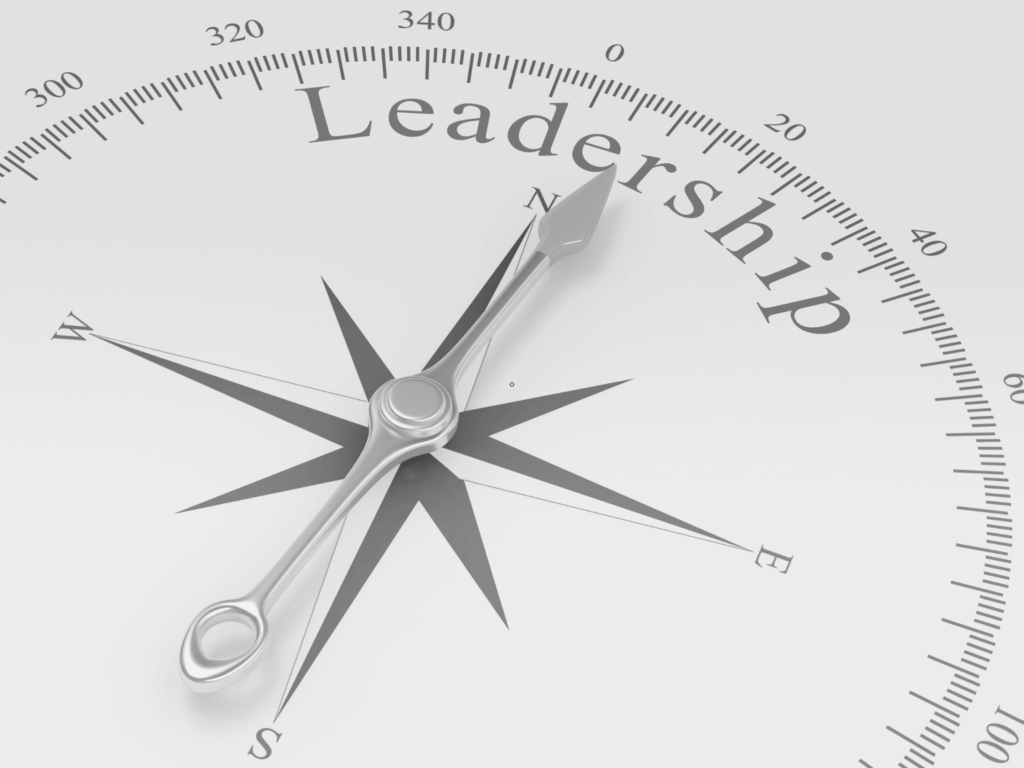Every leader has a style. But do you know yours—or is it leading you?
According to Deloitte’s 2025 Global Human Capital Report, leadership style alignment is now one of the top three predictors of organizational resilience.
The message is clear: mastering your leadership style isn’t optional, instead it’s a strategic advantage.
What Leadership Isn't
Leadership isn’t about titles. It’s about impact, adaptability, and accountability. Yet one of the most overlooked truths in leadership development is that there is no single best leadership style.
The most effective leaders know how to flex their approach. They balance vision with empathy, direct with trust, lead by example, and control with collaboration.
This guide explores the 15 major leadership styles used across organizations today, from mining and manufacturing to non-profit and tech start-ups.
Each style shows when it thrives, where it fails, and how to measure its effectiveness.
What Is a Leadership Style?
Each leader’s style reflects a unique blend of their behaviors, traits, and decision-making approaches they use to motivate and guide their team.
It’s shaped by experience, personality, and values, that deeply influences how effectively a leader inspires trust, drives results, and fosters culture.
Knowing your unique leadership style is vital because it informs every aspect of how you show up; from how you communicate and resolve conflict to how you delegate, strategize, and adapt under pressure.
While management styles emphasize structure, planning, and accountability, leadership styles focus on vision, influence, and human connection.
Truly accountable leaders naturally lean toward one dominant style but adjust their approach depending on the context, challenge, or team dynamic.
Good leaders build what’s known as leadership agility. This is the ability to flex their style consciously without losing authenticity.
This awareness allows them to meet evolving demands while staying grounded in their core values and purpose.
The 15 Different Leadership Styles
Below are the different types of leadership most commonly recognized in today’s workplaces, showing when each style works, where it doesn’t, and how to measure its effectiveness.
1. Adaptive Leadership
Adaptive leadership focuses on guiding teams through change, uncertainty, and complex challenges that don’t have clear solutions.
Key Characteristics
- Embraces experimentation and continuous learning.
- Encourages resilience and innovation in teams.
- Balances short-term stability with long-term transformation.
Use Case
A mining executive navigating new sustainability regulations uses adaptive leadership to help employees adjust to eco-friendly practices while maintaining operational output.
Leadership TipPromote a culture of curiosity by rewarding learning, not just results.
2. Authentic Leadership
Authentic leaders build trust through self-awareness, transparency, and consistency between words and actions.
Key Characteristics
- Leads with integrity and openness.
- Prioritizes emotional intelligence and vulnerability.
- Builds credibility by staying true to personal and organizational values.
Use Case
A CEO of a multinational facing public scrutiny for layoffs openly communicates the reasoning, support plans, and future vision—restoring trust through honesty.
Leadership TipRegularly seek feedback from your team on how your actions align
with stated values.
3. Autocratic Leadership
The autocratic leadership style is characterized by centralized control, where the leader makes decisions unilaterally with minimal input from others.
Key Characteristics
- Strong authority and directive management.
- High discipline and structured processes.
- Fast decision-making in critical scenarios.
Use Case
In an employer association responsible for negotiating labor agreements on behalf of multiple member companies, an autocratic leader may take charge during high-stakes collective bargaining.
Leadership TipUse this style sparingly. It’s effective for crisis control, but counterproductive in creative or collaborative settings.
4. Bureaucratic Leadership
Bureaucratic leaders adhere to policies, procedures, and hierarchies to maintain order and consistency.
Key Characteristics
- Emphasizes rule-following and standardization.
- Maintains structure and accountability.
- Values compliance over innovation.
Use Case
In government departments or regulated industries like finance, bureaucratic leadership ensures strict adherence to compliance standards.
Leadership Tip
Balance structure with innovation by allowing flexibility where risk is low. Use rules to guide consistency, not restrict creativity.
5. Coaching Leadership
Coaching leadership focuses on individual growth and performance improvement through mentoring, feedback, and guidance.
Key Characteristics
- Encourages learning and development.
- Offers constructive feedback regularly.
- Aligns personal and organizational goals.
Use Case
A CHRO in a hybrid organization implements a mentorship program, pairing managers with emerging talent to accelerate leadership readiness.
Leadership TipAsk more questions than you answer.
This way, you help others discover their own solutions.
6. Democratic Leadership
Democratic leadership values group participation and collective decision-making, ensuring that all voices are heard.
Key Characteristics
- Collaborative and inclusive.
- Encourages debate and shared accountability.
- Builds engagement through empowerment.
Use Case
A non-profit leader includes staff and volunteers in program design discussions, fostering ownership and innovation.
Leadership TipUse democratic input for strategic planning but establish final decision
authority to avoid indecision.
7. Delegative Leadership
Delegative leadership (also known as hands-off leadership) empowers team members to take full responsibility for decisions and outcomes.
Key Characteristics
- High autonomy and minimal supervision.
- Trust-based management approach.
- Focuses on outcomes rather than micromanagement.
Use Case
A software startup founder adopts a delegative leadership style, allowing developers to innovate freely within strategic boundaries.
Leadership TipProvide clarity on goals and guardrails; this freedom without
direction leads to drift.
8. Laissez-Faire Leadership
Laissez-Faire leadership offers resources and trust employees to self-direct, intervening only when necessary.
Key Characteristics
- Minimal interference or direction.
- Promotes innovation and self-management.
- Works best with mature, capable teams.
Use Case
In a financial services firm, a senior executive uses a laissez-faire leadership approach by giving seasoned portfolio managers autonomy over their investment strategies, encouraging accountability and innovation.
Leadership TipMonitor results, not effort.
Only intervene when standards or morale decline.
9. Participative Leadership
Participative leadership involves engaging team members in decision-making processes to ensure collective input and ownership.
Key Characteristics
- Values collaboration and diverse perspectives.
- Builds trust and engagement through transparency.
- Encourages open dialogue.
Use Case
An operational manager in a manufacturing firm holds cross-departmental workshops before launching a process overhaul. This ensures buy-in and smoother execution.
Leadership TipPair inclusivity with clarity.
Once consensus is reached, move quickly into action.

10. Pacesetter Leadership
Pacesetter leaders set high standards for themselves and expect their teams to keep up, driving rapid results.
Key Characteristics
- High performance expectations.
- Leads by example through work ethic and speed.
- Prioritizes excellence and accountability.
Use Case
In a pharmaceutical company, a senior R&D director applies a pacesetter leadership style by setting aggressive timelines for drug development and expecting teams to match their high standards for precision and speed.
Leadership TipBalance pace with empathy
—burnout erodes long-term performance.
11. Servant Leadership
Servant leaders put their team’s needs first, focusing on empowerment, development, and wellbeing.
Key Characteristics
- Deep empathy and active listening.
- Prioritizes growth and welfare of others.
- Fosters trust and loyalty through humility.
Use Case
In the animal healthcare industry, a clinic director supports veterinarians and technicians with resources and mentoring to enhance patient care and team morale.
Leadership TipSet boundaries. Serving others shouldn’t come at the cost of your
own energy or strategic focus.
12. Situational Leadership
Situational leadership adapts based on the team’s readiness, competence, and motivation.
Key Characteristics
- Flexible and context-sensitive.
- Balances direction and support.
- Tailors approach to individuals or circumstances.
Use Case
A manager coaching a new employee provides close supervision initially, then shifts to autonomy as confidence grows.
Leadership TipRegularly assess team maturity. What works for one phase of
development may fail in another.

13. Transactional Leadership
Transactional leadership is based on structure, rewards, and performance tracking, focusing on achieving defined objectives.
Key Characteristics
- Emphasizes process, performance, and compliance.
- Uses incentives and corrective actions.
- Maintains stability and consistency.
Use Case
In logistics, a transactional leader ensures efficiency and timeliness by rewarding on-time deliveries and addressing missed targets.
Leadership TipUse this style to create discipline; then transition to transformational
leadership to drive long-term engagement.
14. Transformational Leadership
Transformational leaders inspire others to exceed expectations by connecting purpose, vision, and shared values.
Key Characteristics
- Focused on culture, motivation, and change.
- Builds trust through authenticity and purpose.
- Encourages innovation and continuous learning.
Use Case
In the transportation industry, a managing director practices transformational leadership by rallying employees around a shared vision of sustainable mobility.
Leadership TipAnchor inspiration in action. This can be achieved by translating
vision into measurable milestones.
15. Visionary Leadership
Visionary leadership articulates a compelling future direction and aligns teams around that purpose.
Key Characteristics
- Forward-thinking and inspiring.
- Communicates a strong “why.”
- Balances optimism with strategy.
Use Case
A CEO introducing a sustainability roadmap motivates employees by linking innovation with long-term environmental impact.
Leadership TipPair vision with clarity—
break the big picture into actionable steps.
Why Is Understanding Leadership Styles Important?
Leadership styles are a strong foundation for leadership study and practice.
Understanding how people lead isn’t only relevant for executives. It matters for anyone who takes initiative. Whether you’re directing a meeting, managing a project, supervising a team, or running an entire department, leadership shows up in many forms.
Effective leadership has a ripple effect that extends well beyond performance metrics. According to a 2024 report by Gallup, organizations with highly engaged leaders see teams that are 21% more productive and experience 37% less absenteeism.
Leaders themselves gain from this dynamic. For example, those who invest in developing their self-awareness and communication skills report stronger decision-making confidence, clearer purpose, and higher long-term career satisfaction.
Every leader brings a unique mix of strengths, preferences, and experiences to their role. What separates effective leaders from the rest isn’t sticking to a single method, but knowing when to adapt.
Leadership isn’t static, it’s situational. By learning how to shift their approach with changing circumstances, leaders create teams that are more resilient, engaged, and equipped to succeed in an evolving workplace.
Want a Downloadable PDF of the Different Leadership Styles?
How to Identify The Leadership Style That Fits You
Understanding your natural leadership style gives you insight into how you think, decide, and guide others. It shapes how your team perceives you, how you handle challenges, and how effectively you move people toward shared goals.
Defining your style isn’t always straightforward. For many leaders, it’s an evolving process of reflection, experimentation, and feedback. Begin by identifying your core values, personal strengths, and the leadership qualities you admire in others.
Then, assess your current environment—the culture of your organization, the maturity of your team, and the outcomes you’re striving for. Context often determines which approach will be most effective.
Seek honest feedback from peers and team members to understand how your leadership is experienced. Small adjustments in communication or decision-making can reveal which methods feel authentic and yield stronger results.
How to Choose Your Leadership Style
Whether you’re stepping into management for the first time, taking on a new team, or simply redefining how you lead, choosing a leadership style brings clarity and confidence to your decisions.
Start by reflecting on what comes naturally to you as a leader.
- Do you excel at setting clear goals, or do you thrive on building strong relationships?
- Do you prefer structured systems, or do you lead best in creative, less-defined environments?
- Are you more effective driving short-term results or shaping long-term vision?
Exploring these questions helps you understand your instincts and identifies the approach that feels authentic.
The goal isn’t to label yourself, but to find the balance between who you are and how your leadership impacts your organization, your team, and yourself.

The Final Gut Check
Leadership is never static. It’s a continual process of learning, reflection, and growth. The most effective leaders don’t chase a perfect formula; they cultivate awareness, empathy, and adaptability. Understanding how and why you lead gives you the power to influence with intention and create lasting results for your team and organization.
Each of the leadership styles in this guide offers a lens for understanding your strengths and blind spots. As your role evolves, so will your approach, and that’s a sign of true leadership accountability and maturity. Take time to observe how your choices impact others, seek feedback regularly, and refine your style to meet new challenges.
If you’re ready to take the next step, explore our leadership development programs, try a self-assessment activity, or start a conversation with your peers about the way you lead.
Every small step toward greater self-awareness strengthens your credibility and your impact.
So, take a moment to reflect and think about: what is your management style?
FAQ
What is the most effective leadership style?
The most effective leadership style depends on context, team dynamics, and organizational goals. Rather than relying on one approach, effective leaders adapt across different types of leadership. They combine vision, empathy, and accountability to inspire performance and achieve lasting results.
How can I be more effective in my own leadership style?
You can be more effective in your leadership style by staying self-aware, open to feedback, and adaptable. Focus on clear communication, consistency, and leading by example to build trust and drive results.
What are the significant reasons why leadership is important?
- Provides direction: Leaders set clear goals and guide teams toward a shared vision.
- Builds trust: Strong leadership fosters credibility, respect, and open communication.
- Drives performance: Effective leaders motivate teams to achieve and exceed expectations.
- Develops people: Leadership encourages growth, learning, and skill development.
- Shapes culture: Leaders influence organizational values, collaboration, and morale.







